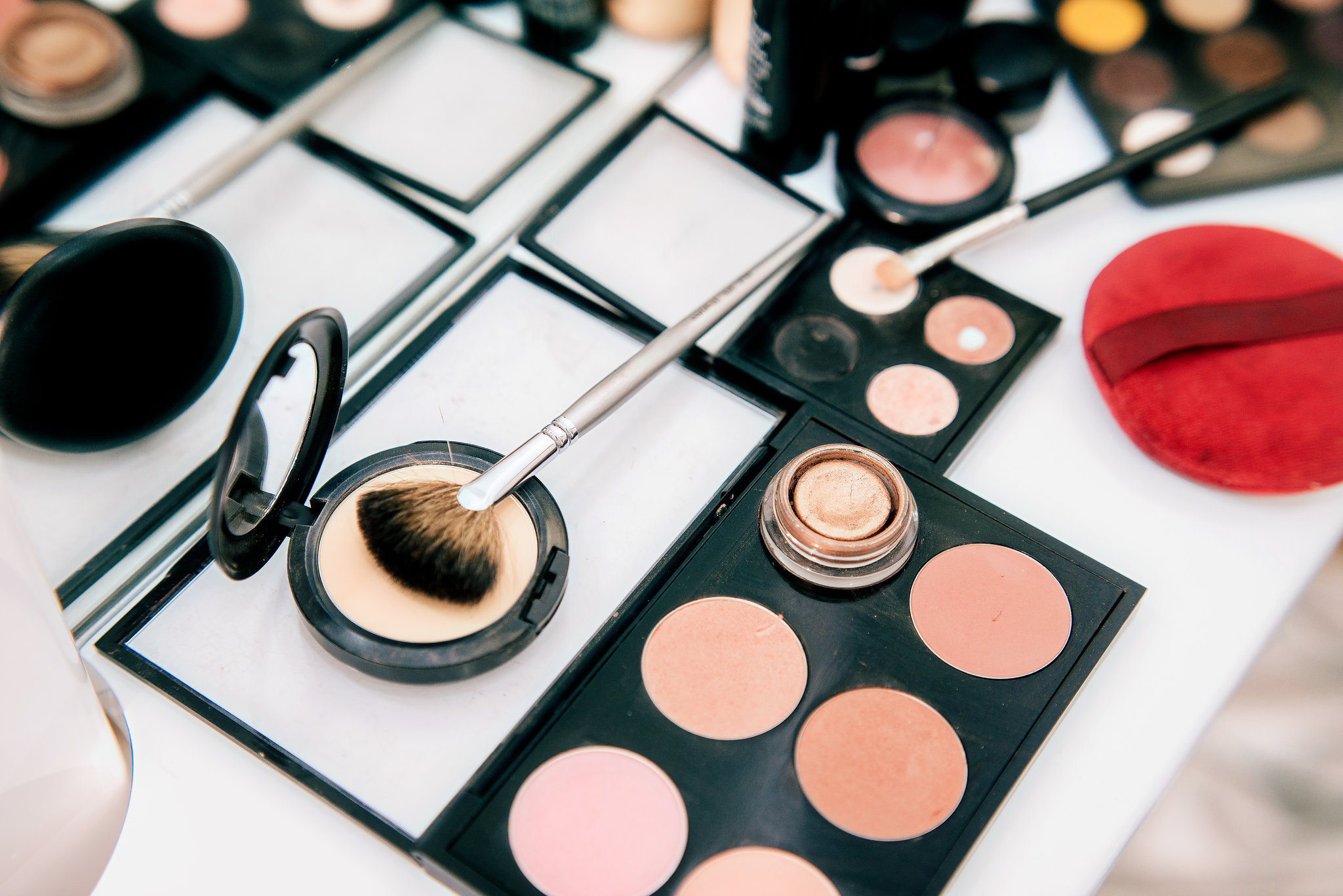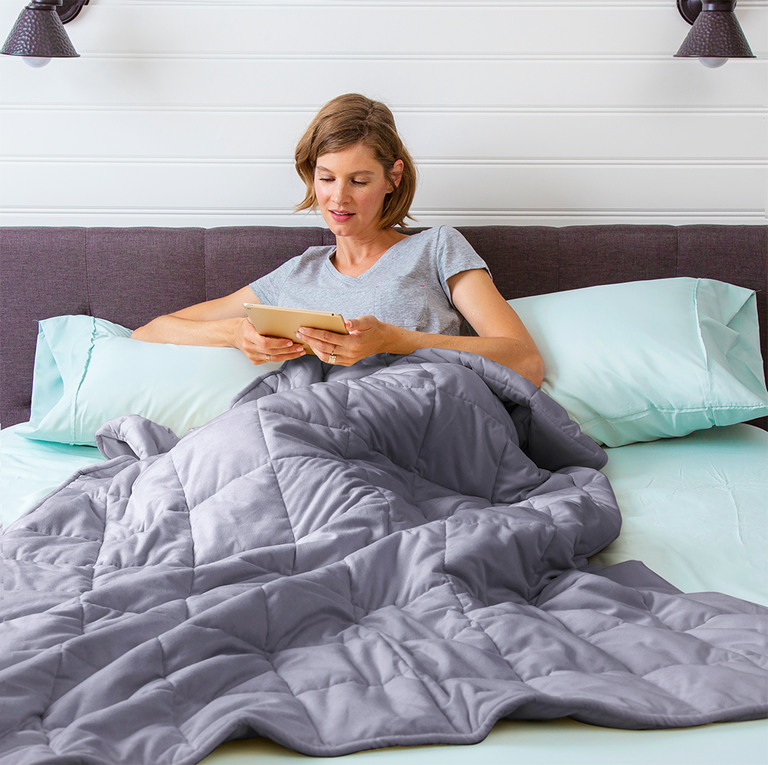
Travel can be good for your soul but so hard on your skin—especially in the summer, when the sun is warm, and the water is fine (… and super chlorinated). Your skin has lots of reasons to act out, from the bacteria you breathe in on the plane to changes in climate and routine, not to mention increased sun exposure. We checked in with the experts to find out how to keep skin happy while living that #beachlife—and yes, the answer is more than just sunscreen (although it can’t be said enough: You definitely want to pack sunscreen.)
Improve your plane hygiene (and hydration).
Yes, I’m the person on the plane who’s constantly spritzing my travel-size facial mist, applying K-beauty sheet masks and patches, and then donning an overnight sleep pack. I like to think my willingness to wear undereye patches in public makes me a kind of “I don’t give a f*ck” beauty hero. And while yes, this is a little extra—and not entirely necessary—as it turns out, there really is something to my elaborate plane rituals.
“Cleanliness is everything, especially when dealing with the recycled air on a plane,” says Jacqueline Schaffer, M.D., founder of Schique Beauty and author of Irresistible You. Schaffer suggests carrying makeup wipes on the plane to wipe down your skin if you need it, but just as importantly, to wipe down the seat and the armrests before you sit. “People leave oils and bacteria behind on the seat, which is why sometimes people can develop body acne, particularly on their back, arms, and legs, or anywhere that the skin is exposed.” A little pat-down with micellar wipes could save you some trouble later—and you can also apply that rule to your phone screen.
Develop healthy hotel habits.
“In the summer, we’re prone to breakouts. We’re often sweating more, and sometimes using new products,” says Laura Scott, M.D., a dermatologist who runs A Little Bit of Lacquer. “And we can get rashes from using hotel toiletries that may aggravate sensitive skin.” Even if you’re vacationing someplace fancy, those lovely designer hotel toiletries can still give your skin trouble if you’ve never tested them out before.
Scott recommends traveling with your own products so your skin isn’t thrown any curveballs. Since all the sweat, salt, and sand can be extra irritating, she loves Dove body wash for sensitive skin. Here’s her pro tip: “If you’re trying to limit the amount of liquids you pack, toss in a little travel-size Dove Beauty Bar and use that. Or if acne is a problem—or chest acne or ‘bacne’—I’d recommend packing an acne wash like Panoxyl to use for the face and back.”
If your favorite products don’t have travel-size versions or if you want to be thrifty, it’s a good idea to invest in some mini travel bottles that you can fill with the products you would normally use. And if you’re on a plastic diet and trying to cut down on your consumption, you could reuse or purchase a few small glass cosmetics jars for your favorites.
Seriously, protect yourself from the sun.
Virtually all dermatologists worldwide agree in a resounding chorus that sunscreen is necessary all the time, no matter who or where you are, no matter your skin color or the cloud cover. Those UV rays are for real. Even if you never seem to burn, you run the risk of skin cancer when you go outside unprotected. Here’s a rundown of some good SPF options to cover all your bits and bases:
Since you need to reapply sunscreen every few hours, and more often if you’re swimming or sweating, you definitely need to bring some with you. “Apply a whole-body sunscreen before leaving for the day and toss a spray sunscreen in your bag to remember to reapply on your body while you’re out,” Scott says. Go for a sunscreen that’s been well-rated by the EWG.
Your accessories can help too. Scott recommends wide-brimmed hats and shades with full UV protection to keep the sun off you. But if you’re really active on your vacations, that sunscreen might not last too long if you’re surfing, climbing, or otherwise killing it all day—so you might want to pack some lightweight UV-protective clothing with long sleeves.
Adjust your skin care routine.
Schaffer says that knowing your skin type is key—the heat can be good for people with dry skin, particularly if there’s humidity, because there’s more moisture in the air. For people with oily skin, however, the heat can be a challenge. She explains that a common mistake people make is to skip the moisturizer because they’re worried it’ll make their skin more oily, but dry, cracked skin makes it easier for bacteria to get in and cause acne—and that dryness also causes the skin to produce more oil.
Scott says that travelers should keep their skin routine “as simple as possible,” starting with cleansing and ending with moisturizing. Shaffer includes a toner and serum in her recommended routine. If your skin is used to a few more steps, it’s fine to keep it up, though you might want to make a few tweaks for warm weather, which are suggested below.
Cleansing
Clean skin is always a good idea, but it’s especially important on vacation, when you’re maybe sweating more than usual and exposed to the elements. Schaffer suggests that people with dry or sensitive skin use a creamy cleanser in the summer. For those more on the oily side, she recommends using a water-based cleanser in the morning and then a creamy or foam cleanser in the evening. She adds that it’s a good idea to exfoliate a few times a week to keep your complexion glowing. Scott suggests using something gentle, like Cetaphil, regardless of skin type.
Toning and Moisturizing
If you’re already a toner type of person, Schaffer suggests applying a toner after cleansing, but rather than sweeping toner over your face with a cotton ball, which could wick away needed moisture, use a mister to keep your skin super hydrated in the heat. If you have oily skin, then all you probably need to do is apply a serum before putting on sunscreen. Dry skin might like a light, water-based moisturizer after toning and before SPF.
Treat sunburn and breakouts.
It’s a good idea to pack a few remedies just in case you end up getting a little more sun than you intended. Hydration is the key, Schaffer says, and she suggests aloe, a tried-and-true remedy for sunburn and wound healing. Aloe doesn’t protect against UV damage and can’t be used as a replacement for sunscreen, but if you’re already red and peeling, smoothing pure aloe gel on your burn can give you some relief and help you heal a little faster.
At night, Schaffer likes to use coconut oil or shea butter to calm a sunburn. “Only use it before bed though,” she says, “because wearing oils during the day will make you burn faster.”
If you’re dealing with acne while you’re traveling, Schaffer suggests tea tree oil as a natural remedy. With its antimicrobial and antifungal properties, tea tree oil, which was discovered by Aboriginal people centuries ago, has also been shown to be an effective treatment for mild to moderate acne. Schaffer recommends applying a dab of tea tree oil directly to pimples, but it’s a good idea to use a carrier oil, like vitamin E oil, since undiluted tea tree oil can be a little strong.
Plan ahead.
Make sure your carry-on includes everything you need and you’ve got some re-application sunscreen handy in your bag or glove compartment. Also, even though it can be annoying when you’re exhausted after all your adventures, but always prioritize washing and moisturizing your face and body before bed—and in the morning too. With a simple routine, you can make room for all that important vacation play time and still keep your skin glowing and soft.
Do you think this might actually work for your summer travel? Comment below.
By Jezmina Von Thiele
Source: Greatist






Leave A Comment
You must be logged in to post a comment.